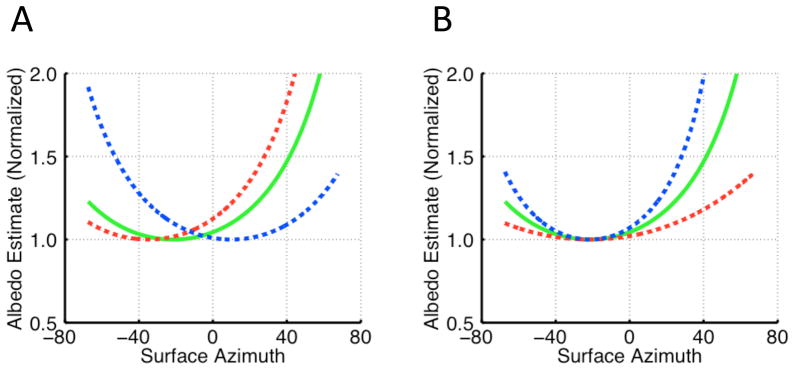Figure 7. Matching functions.
A. The normalized surface albedo of a surface of constant luminance is plotted versus surface azimuth for a scene illuminated by a combination of collimated and diffuse sources (solid green curve). We refer to such a curve as a matching function. Surface albedo is normalized so that its minimum is one. This minimum occurs when the surface azimuth is identical to the azimuth of the collimated source. When the surface azimuth differs from that of the punctuate source, the surface must have higher albedo to produce the same luminance. If a visual system misestimates the azimuth of the collimated light source, but otherwise computes an estimate of surface albedo correctly, the resulting plot of estimated normalized surface albedo vs. azimuth will be shifted so that its minimum falls at the estimated azimuth but is otherwise unchanged. Two examples are shown as dashed red and blue lines. B. If a visual system misestimates the relative intensity of the collimated source but otherwise computes an estimate of surface albedo correctly, the resulting plot of relative surface albedo vs. azimuth will be shallower or steeper as shown but otherwise unchanged. Two examples are shown as dashed red and blue lines. The solid green curve is replotted from Panel A.

